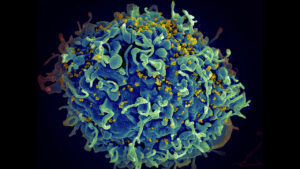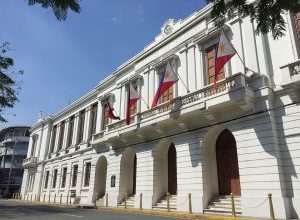Philippines told to boost awareness about HIV/AIDS

FILIPINOS have low awareness about the human immunodeficiency virus (HIV), making them at risk of getting — and spreading — the disease, according to medical experts.
“There are many patients who don’t know they are carrying HIV,” said Manoj Sihag, Philippine country head of Camber Pharmaceuticals, Inc., a unit of Indian drugmaker Hetero Drugs and maker of generic drugs including antiretroviral therapy drugs for HIV.
The government should open more treatment hubs especially in the countryside, he said in an interview on March 17. “A lot of awareness is already done at the Metro Manila level, but it needs to be expanded further to the provincial areas.”
“There is still a big gap in terms of diagnosis,” Mr. Sihag said.
The Health department has said 14,970 more Filipinos got HIV last year, 21% more than a year earlier. The increase pushed the average number of people diagnosed with HIV daily to 41 from 34.
There were about 140,000 HIV cases in the Philippines in 2021, according to the HIV and AIDS Data Hub website.
Antiretroviral therapy involves taking a daily combination of HIV medicines. Some people also take pre-exposure prophylaxis medicines to prevent HIV.
More work needs to be done to increase awareness about pre-exposure prophylaxis medicines, said Danvic T. Rosadiño, program and innovation director at LoveYourself, Inc., an HIV advocacy group.
“While people may be aware in Mega Manila, work should be done to increase access and educate people why they should be enrolled,” he said in a Facebook Messenger chat.
“In other areas of the Philippines, establishing access points should be a priority. How can we offer and generate demand for something that is not accessible?” he asked.
Only a third of Filipino youth aged 15-24 years are aware of sexually transmitted diseases and emergency contraceptive pills, according to a 2021 study by the University of the Philippines Population Institute.
Fewer than 20% also had a comprehensive knowledge of HIV and acquired immunodeficiency syndrome (AIDS), according to the study released in October.
Boosting HIV awareness should be done by various stakeholders, Mr. Rosadiño said. The Philippines might have to consider novel approaches given its conservative culture, he added.
“Aside from comprehensive sexuality education in schools, companies can also contribute by including HIV in workplace policies,” he said, adding that social media could also help promote awareness in the 15-24-year age group.
The Philippines spends more than a billion pesos worth of HIV drugs yearly that are given to people living with HIV at state treatment hubs, Mr. Sihag said.
Camber Pharmaceuticals’ own pre-exposure prophylaxis prescriptive pills are sold in local pharmacies at P50 each.
HIV/AIDS spending from domestic public and international sources hit $26.8 million (P1.46 billion) in 2018, with domestic spending accounting for more than 81% of pooled resources, according to the Sustainable HIV Financing in Transition website.
A quarter of this AIDS spending goes to key population prevention programming, with majority going toward people who inject drugs, it said.
State agencies including the United Nations continue to promote HIV awareness “so people can go for a diagnosis,” Mr. Sihag said.
“People should not think of [being HIV-positive] as a stigma or see it as a warrant of death,” he said. “With antiretroviral therapy drugs, and if they follow the prescription of their doctors, they can live a normal life.” — Patricia B. Mirasol




